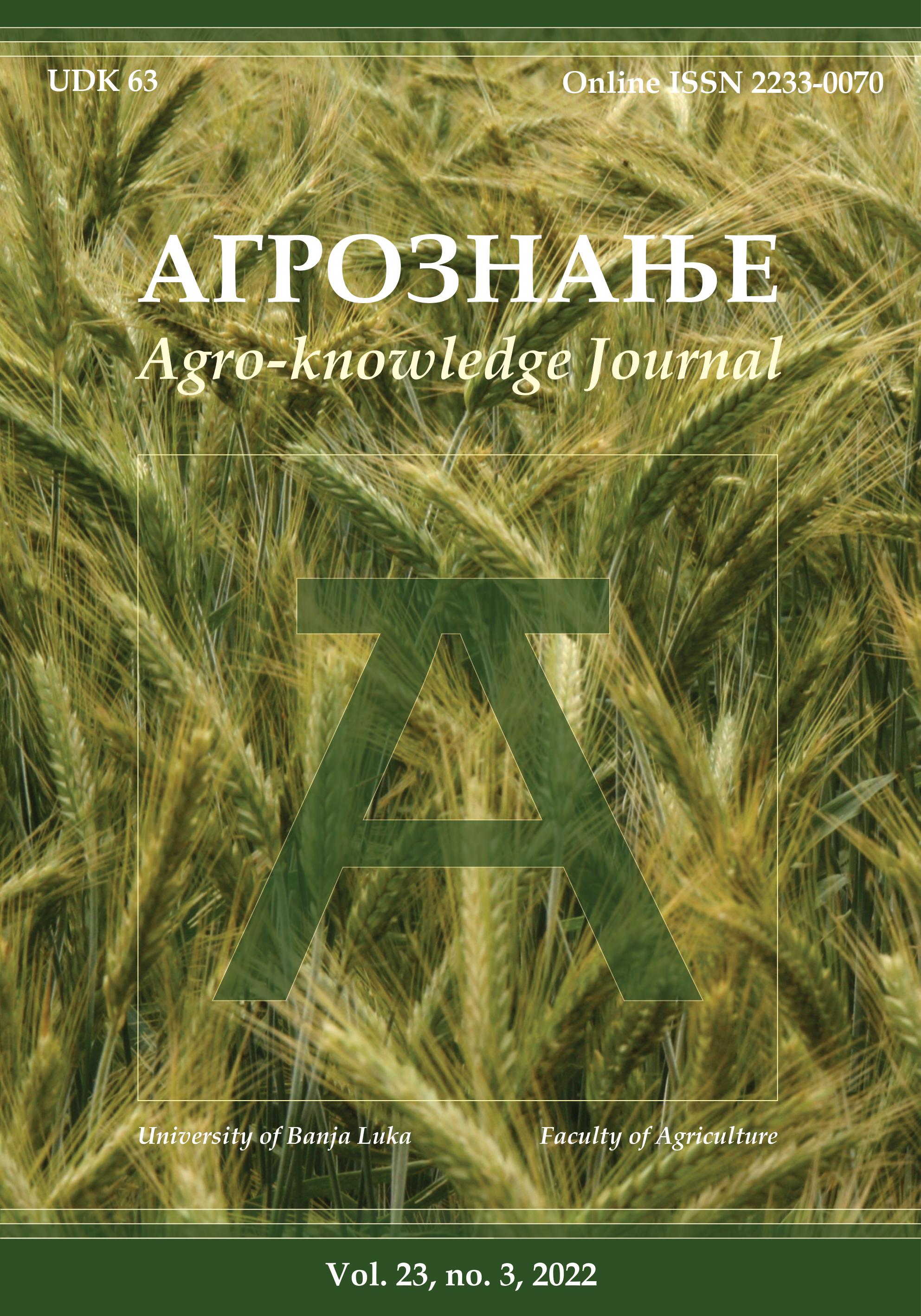Importance of sowing date optimization for morphological properties and grain yield of maize inbred lines
Значај оптимизације рока сјетве за морфолошке особине и принос зрна инбред линија кукуруза
DOI:
https://doi.org/10.7251/AGREN2203121TAbstract
This study aimed to determine the influence of sowing dates on morphological properties and grain yield. The experiment was conducted during 2018 (Y1) and 2019 (Y2) at one location in Serbia (Zemun Polje). Three inbred lines, produced at the Maize Research Institute (Serbia), were used as the material. Sowing was set in two terms, earlier 1 April (SD1) and optimal 20 April (SD2). Morphological properties of the cob were measured in the laboratory conditions: the ear weight (EW), the cob weight (CW), the cob length (CL), the cob thickness (CT), the 1000 kernel weight (SW), and the grain yield (GY). The sowing date significantly affected the morphological properties of the cob (p≤0,05). The interaction of factors also had a significant impact on the variability of traits. Three-way analysis of variance indicates that SD1Y1 treatment in combination with ZP1 and ZP3 inbred lines has a higher yield (6.28 t ha-1, 7.05 t ha-1). Further, the 1000-kernel weight in all three genotypes was higher in the SD1, ZP1 (324.35 g), ZP2 (329.78 g), and ZP3 (326.55 g). The earlier sowing date was also favourable for the cob weight. Meteorological conditions can be more or less stressful for field crops. Adverse weather conditions can be avoided or reduced by applying different sowing dates.
Key words: sowing date, maize, grain yield, morphological properties

